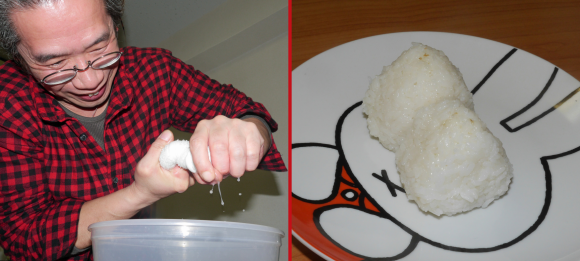
In Japan, rice balls can be flavored with almost anything, so we decided to make some from the most exclusive seasoning of all: salt made from Mr. Sato’s sweat!
If you want to, you can get pretty fancy when making rice balls, called musubi or onigiri in Japanese. Gourmet ingredient choices include unagi (freshwater eel) or ikura (salmon roe), both widely considered delicacies in Japan.
On the other end of the spectrum, though, you’ll find more pedestrian fillings such as salmon or bonito flakes. The most basic rice balls of all, though, are shio musubi, which are just rice balls with a dash of salt.
Simple as they may be, shio musubi can actually be quite refreshing and tasty, especially when made with high-end salt. So in taking the local food movement to its ultimate extreme, we made our own salt, sourced from the sweat of RocketNews24’s intrepid Japanese-language reporter Mr. Sato.
Step one, of course, was to obtain a sufficiently sized sweat Sato sweat sample. While we could have just cranked up the heat in the office, we instead sent Mr. Sato over to Shinjuku’s Kabukicho, one of Tokyo’s largest bar districts which, like all night life centers in Japan, has a number of saunas. After stripping off his clothes, our reporter spent 10 minutes sitting in the sauna, wiping himself off with a towel as he sweat away. He then stepped out for a two-minute rest before going back in for another 10-minute stint, eventually doing six cycles and thus spending a cumulative hour in the sauna.
He then stuck the towel he’d been using the whole time in a Ziploc bag, brought it back to the office, and wrung it out into a bowl.
Having never made salt from human sweat before, we weren’t entirely sure if we had enough raw material to work with, but we poured what we had into a frying pan, then switched on the burner to cook off the moisture.
The liquid soon began to bubble, and before long it evaporated, leaving behind a pale powder that had to be salt! Well, we suppose there’s also the chance that there were some granular dirt and other random particles mixed in, but setting aside purity levels, we now had a batch of Sato-sourced sodium.
After waiting for the pan to cool down, but before making the rice balls themselves, Mr. Sato decided to try his signature seasoning. Since it came from him, it must be perfectly suited to his palate’s natural preferences, right?
So he put a little on his fingertip…
…took a lick…
…and found out that it had an even stronger salty taste than he’d expected! Mr. Sato described the effect as “condensed salt,” with a concentrated effect similar to condensed milk.
Oh, and it also stank like a sweaty Mr. Sato, which maybe we should have expected.
But of course, some seasonings only reveal their true deliciousness when they’re used to accent the taste of other foods. So the next order of business was to scrape the salt out of the pan.
▼ It was only then that we realized that Sato Salt isn’t white, but a troubling yellow in color.
Then, Mr. Sato got to work shaping two rice balls, which was really the only part of this day in the kitchen that wasn’t gross.
Once that was done, Mr. Sato took a pinch of Sato Salt and sprinkled it across the top of his two triangles of rice.
Then, it was time for the moment of truth.
And the truth was terrible.
For a brief split-second of the first bite, the Sato Salt shio musubi tasted like an ordinary salt-seasoned rice ball. The salty tones are punishingly strong, though, and then there’s the smell, and taste, of sweat. And no, you don’t get used to it as the meal goes on. In fact, the more you eat,the harder it becomes to block out the fact that you’re eating crystalized perspiration.
Just to make sure Mr. Sato’s negative reaction wasn’t the result of some subconscious self-preservation mechanism that prevents people from thinking their own body would taste good, Seiji, the bravest of our Japanese-language reporters in the office that day, also agreed to try a lick of Sato Salt in a taste test we recorded.
So in conclusion, yes, you can make salt from your sweat, and yes, you can use it to season musubi. That doesn’t mean you should, though, even if you’re Mr. Sato.
Images: ©RocketNews24
[ Read in Japanese ]


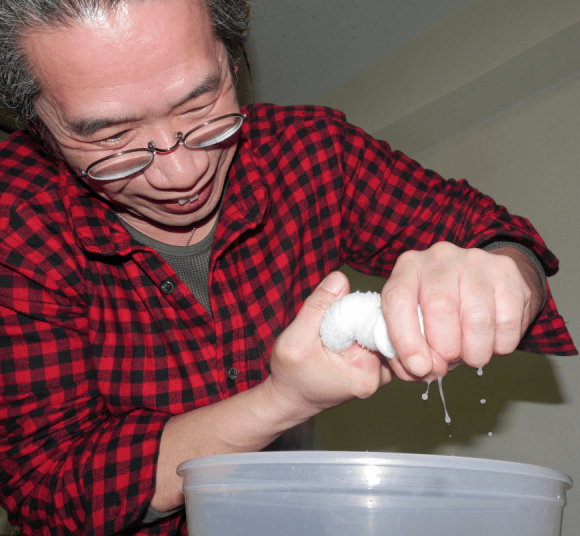
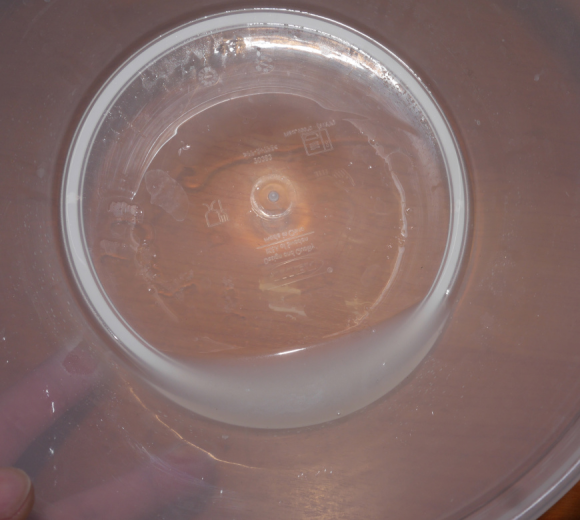
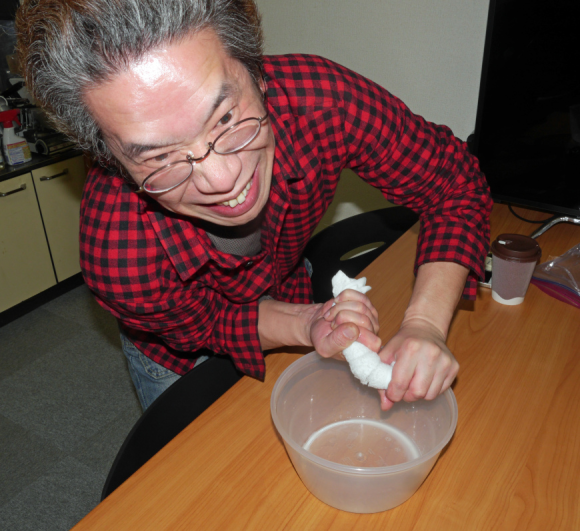
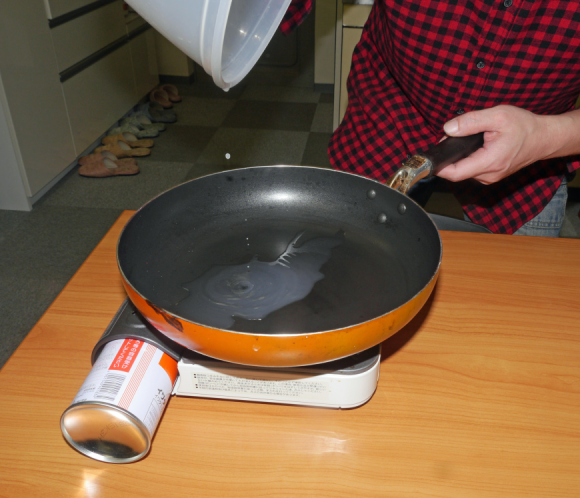
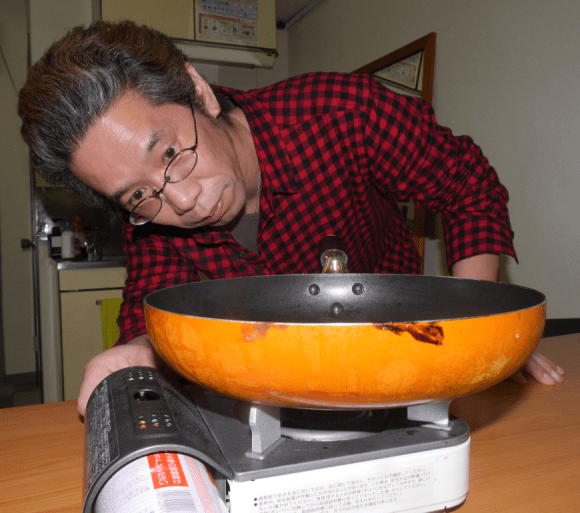
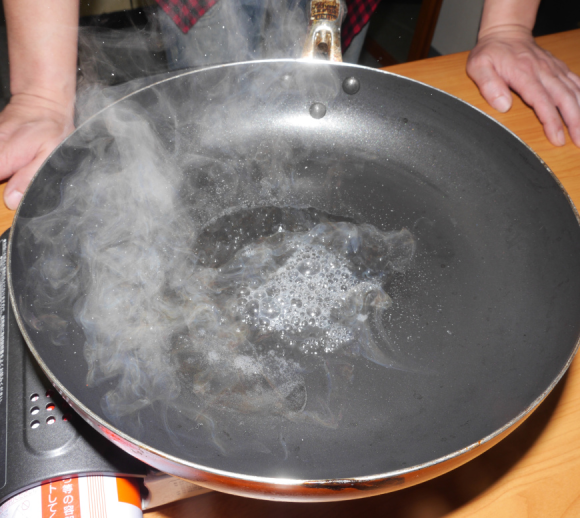
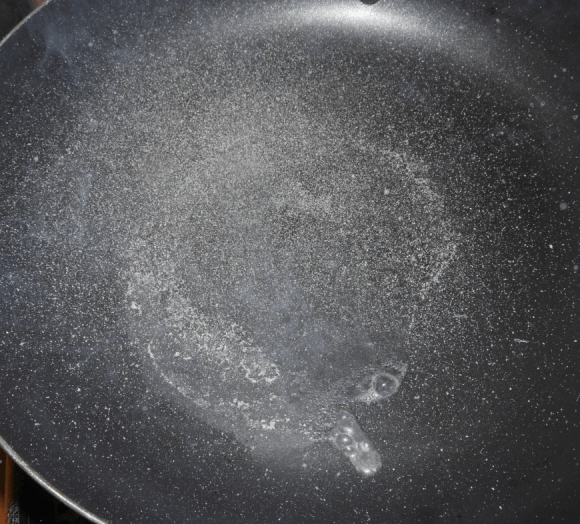
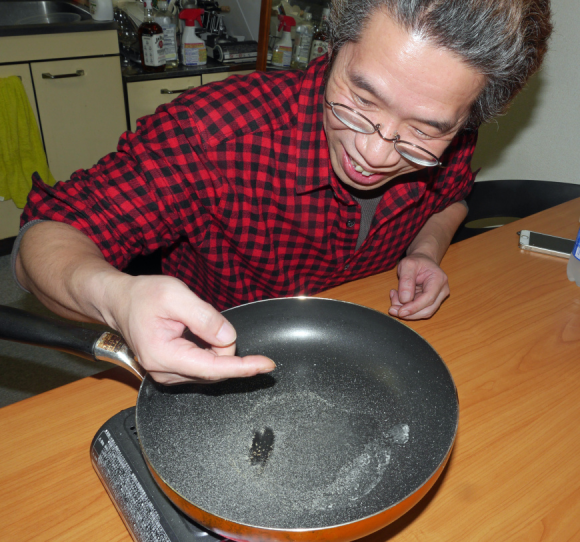



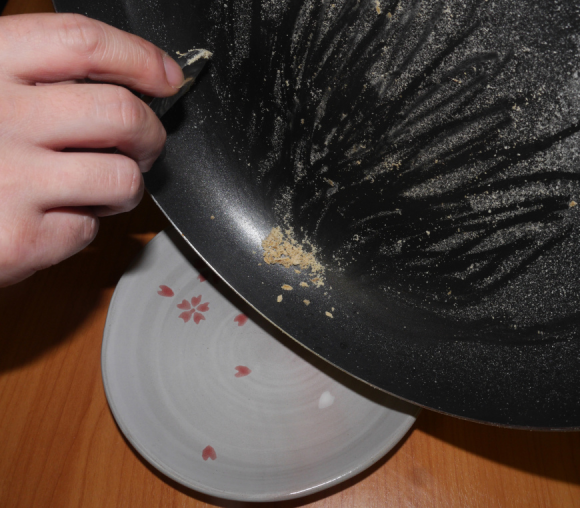
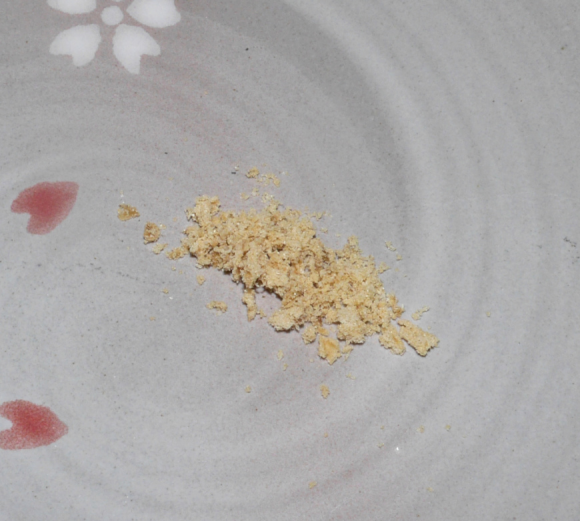
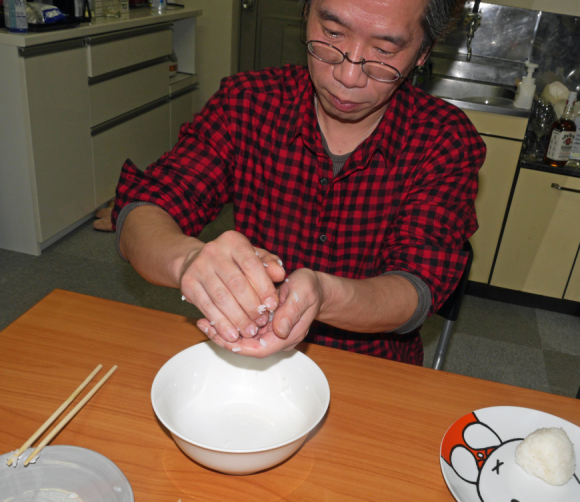

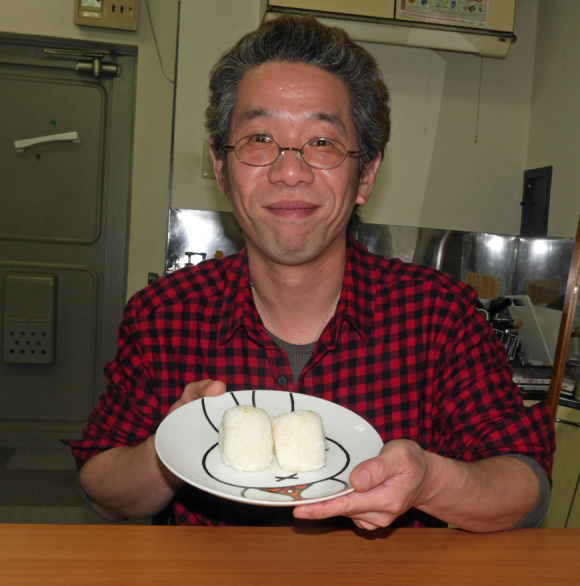
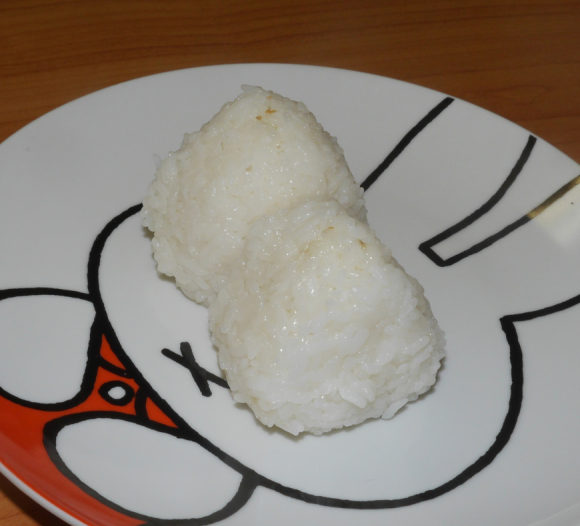

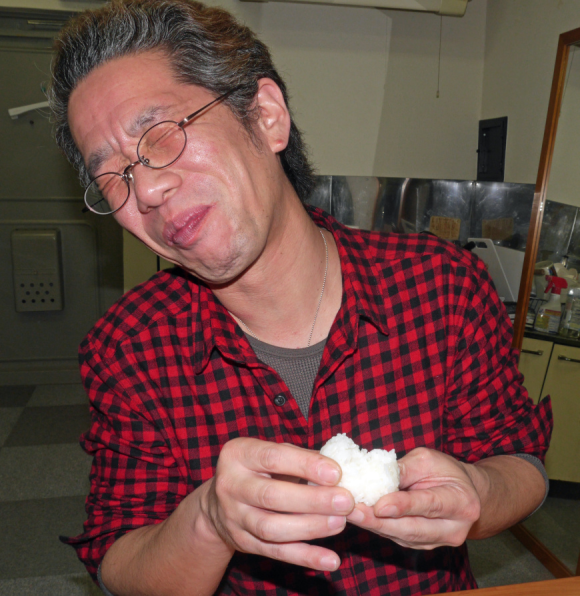



 $89 “Phantasmal Sushi Roll” fancies up life with Matsusaka beef and truffle salt 【Taste Test】
$89 “Phantasmal Sushi Roll” fancies up life with Matsusaka beef and truffle salt 【Taste Test】 Around Japan in 47 rice balls: Mr. Sato buys each prefecture’s musubi all from one Tokyo shop
Around Japan in 47 rice balls: Mr. Sato buys each prefecture’s musubi all from one Tokyo shop Japanese Twitter user creates terrifying ‘fluorescent’ rice balls
Japanese Twitter user creates terrifying ‘fluorescent’ rice balls The world’s most famous sushi restaurant sells seaweed too, so we made nori rice balls with it
The world’s most famous sushi restaurant sells seaweed too, so we made nori rice balls with it “Grilled corn” and “gyoza” flavored shaved ice sold at Saitama cafe
“Grilled corn” and “gyoza” flavored shaved ice sold at Saitama cafe Beautiful new Final Fantasy T-shirt collection on the way from Uniqlo【Photos】
Beautiful new Final Fantasy T-shirt collection on the way from Uniqlo【Photos】 Randomly running into a great sushi lunch like this is one of the best things about eating in Tokyo
Randomly running into a great sushi lunch like this is one of the best things about eating in Tokyo Is the new Shinkansen Train Desk ticket worth it?
Is the new Shinkansen Train Desk ticket worth it? Disney princesses get official manga makeovers for Manga Princess Cafe opening in Tokyo
Disney princesses get official manga makeovers for Manga Princess Cafe opening in Tokyo We try out “Chan Ramen”, an underground type of ramen popular in the ramen community
We try out “Chan Ramen”, an underground type of ramen popular in the ramen community Osaka’s creepy cute mascot speaks for first time, adds more fuel the creepy OR cute debate【Video】
Osaka’s creepy cute mascot speaks for first time, adds more fuel the creepy OR cute debate【Video】 Kyushu-exclusive Black Mont Blanc goes nationwide in a “Special” way
Kyushu-exclusive Black Mont Blanc goes nationwide in a “Special” way Foreign English teachers in Japan pick their favorite Japanese-language phrases【Survey】
Foreign English teachers in Japan pick their favorite Japanese-language phrases【Survey】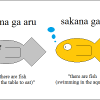 Seven mistakes foreigners make when speaking Japanese—and how to fix them
Seven mistakes foreigners make when speaking Japanese—and how to fix them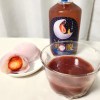 We tried Japan’s Strawberry Daifuku? liqueur, one of three dessert-themed liqueurs
We tried Japan’s Strawberry Daifuku? liqueur, one of three dessert-themed liqueurs New Studio Ghibli bedding sets are cool in all senses of the word
New Studio Ghibli bedding sets are cool in all senses of the word Our Japanese reporter visits Costco in the U.S., finds super American and very Japanese things
Our Japanese reporter visits Costco in the U.S., finds super American and very Japanese things New Pokémon cakes let you eat your way through Pikachu and all the Eevee evolutions
New Pokémon cakes let you eat your way through Pikachu and all the Eevee evolutions There’s a park inside Japan where you can also see Japan inside the park
There’s a park inside Japan where you can also see Japan inside the park Japanese convenience store packs a whole bento into an onigiri rice ball
Japanese convenience store packs a whole bento into an onigiri rice ball Hanton rice — a delicious regional food even most Japanese people don’t know about, but more should
Hanton rice — a delicious regional food even most Japanese people don’t know about, but more should Final Fantasy, Kingdom Hearts, and Dragon Quest pet product line announced by Square Enix
Final Fantasy, Kingdom Hearts, and Dragon Quest pet product line announced by Square Enix Studio Ghibli releases Kiki’s Delivery Service chocolate cake pouches in Japan
Studio Ghibli releases Kiki’s Delivery Service chocolate cake pouches in Japan Japan’s bone-breaking and record-breaking roller coaster is permanently shutting down
Japan’s bone-breaking and record-breaking roller coaster is permanently shutting down New definition of “Japanese whiskey” goes into effect to prevent fakes from fooling overseas buyers
New definition of “Japanese whiskey” goes into effect to prevent fakes from fooling overseas buyers Foreign passenger shoves conductor on one of the last full runs for Japan’s Thunderbird train
Foreign passenger shoves conductor on one of the last full runs for Japan’s Thunderbird train Kyoto bans tourists from geisha alleys in Gion, with fines for those who don’t follow rules
Kyoto bans tourists from geisha alleys in Gion, with fines for those who don’t follow rules Studio Ghibli unveils Mother’s Day gift set that captures the love in My Neighbour Totoro
Studio Ghibli unveils Mother’s Day gift set that captures the love in My Neighbour Totoro Domino’s Japan now sells…pizza ears?
Domino’s Japan now sells…pizza ears? Toyota built a life-sized Miraidon Pokémon and are letting people test drive it this weekend
Toyota built a life-sized Miraidon Pokémon and are letting people test drive it this weekend New Japanese KitKat flavour stars Sanrio characters, including Hello Kitty
New Japanese KitKat flavour stars Sanrio characters, including Hello Kitty Sales of Japan’s most convenient train ticket/shopping payment cards suspended indefinitely
Sales of Japan’s most convenient train ticket/shopping payment cards suspended indefinitely Sold-out Studio Ghibli desktop humidifiers are back so Totoro can help you through the dry season
Sold-out Studio Ghibli desktop humidifiers are back so Totoro can help you through the dry season Japanese government to make first change to romanization spelling rules since the 1950s
Japanese government to make first change to romanization spelling rules since the 1950s Ghibli founders Toshio Suzuki and Hayao Miyazaki contribute to Japanese whisky Totoro label design
Ghibli founders Toshio Suzuki and Hayao Miyazaki contribute to Japanese whisky Totoro label design Doraemon found buried at sea as scene from 1993 anime becomes real life【Photos】
Doraemon found buried at sea as scene from 1993 anime becomes real life【Photos】 Tokyo’s most famous Starbucks is closed
Tokyo’s most famous Starbucks is closed One Piece characters’ nationalities revealed, but fans have mixed opinions
One Piece characters’ nationalities revealed, but fans have mixed opinions We asked a Uniqlo employee what four things we should buy and their suggestions didn’t disappoint
We asked a Uniqlo employee what four things we should buy and their suggestions didn’t disappoint Princesses, fruits, and blacksmiths: Study reveals the 30 most unusual family names in Japan
Princesses, fruits, and blacksmiths: Study reveals the 30 most unusual family names in Japan Studio Ghibli’s new desktop Howl’s Moving Castle will take your stationery on an adventure
Studio Ghibli’s new desktop Howl’s Moving Castle will take your stationery on an adventure We go to a 7-Eleven in Aomori and find a surprising “one per family” item on the shelf
We go to a 7-Eleven in Aomori and find a surprising “one per family” item on the shelf Is that restaurant in Tokyo with the giant mecha crab sign any good?
Is that restaurant in Tokyo with the giant mecha crab sign any good? Japanese chain Bikkuri Donkey’s enormous salad almost beats Mr. Sato, but not because of its size
Japanese chain Bikkuri Donkey’s enormous salad almost beats Mr. Sato, but not because of its size The best-selling rice ball at Family Mart is…SPAM onigiri?
The best-selling rice ball at Family Mart is…SPAM onigiri? Tasty and cheap: 30 minutes of all-you-can-eat yakiniku for only 780 yen
Tasty and cheap: 30 minutes of all-you-can-eat yakiniku for only 780 yen Tokyo restaurant offers “DIY Tempura Bowls,” so of course we had to go check it out
Tokyo restaurant offers “DIY Tempura Bowls,” so of course we had to go check it out Mr. Sato broadens his home drinking horizons at Kaldi【Japan’s Best Home Senbero】
Mr. Sato broadens his home drinking horizons at Kaldi【Japan’s Best Home Senbero】 Mr. Sato shows us what happens when you try to cook rice with only eggs 【SoraKitchen】
Mr. Sato shows us what happens when you try to cook rice with only eggs 【SoraKitchen】 Mr. Sato warms an egg in his armpit for a delicious Japanese dish【SoraKitchen】
Mr. Sato warms an egg in his armpit for a delicious Japanese dish【SoraKitchen】 What’s it like to eat eel from a Japanese vending machine?
What’s it like to eat eel from a Japanese vending machine? Be Mr. Sato’s online friend, and he might take you to dinner, like he did with these foreign fans
Be Mr. Sato’s online friend, and he might take you to dinner, like he did with these foreign fans Which Japanese convenience store has the best plain onigiri rice balls?
Which Japanese convenience store has the best plain onigiri rice balls? Nissin to sell rice bowls covered in those little “mystery meat” cubes from Cup Noodle
Nissin to sell rice bowls covered in those little “mystery meat” cubes from Cup Noodle We tried Japan’s peach-flavored potato chips, and they do not disappoint in their peachiness
We tried Japan’s peach-flavored potato chips, and they do not disappoint in their peachiness We try french fries and chocolate sauce at Lotteria Japan
We try french fries and chocolate sauce at Lotteria Japan A reader asks Mr. Sato to meet in-person, and gives him an unforgettable message
A reader asks Mr. Sato to meet in-person, and gives him an unforgettable message
Leave a Reply